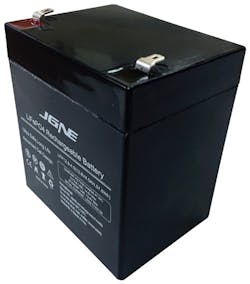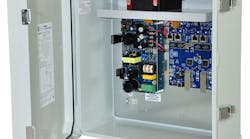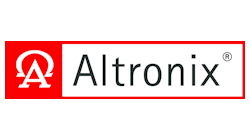I recently had the chance to visit the Altronix headquarters and factory deep in the heart of Brooklyn, N.Y. When I asked what’s new, I was told about a new battery charger they had developed for lithium-based batteries. Naturally, I thought they were talking about lithium ion batteries, used in untold applications – but also the source of some spontaneous fires.
I was puzzled about their motivation since, for eons, lead acid batteries have been the workhorse of the security industry. Thus began my education on lithium iron phosphate – LiFePO4 (aka lithium ferrophosphate) or “LFP” batteries.
Comparing Battery Types
Before we can get into the specifics of LFP batteries, let’s take a closer look at the various types of batteries and how to compare them, with the help of a guide I found at Battery University (www.batteryuniversity.com):
First, some parameters used to compare and evaluate batteries:
- Gravimetric Energy Density (Wh/kg): The amount of energy stored in a defined weight volume. Think of this as how much power a battery of a certain weight has the capability to deliver. There is also a parameter known as volumetric energy density, i.e., power per unit volume.
- Internal resistance: Determines how much power can (or can’t) be delivered to the external load as a result of internal resistive losses, creating some amount of heat from the voltage drop.
- Cycle life: The number of complete charge-discharge cycles the battery can undergo until its capacity falls to 80 percent of its original.
- C-rate: Also referred to as discharge rate, it is the amount of the battery’s charge that can be dissipated – referenced to one hour – when discharged at its stated rate. For example, a 1C rate for a 10 Ah-rated battery, will source 10 A and fully discharge in one hour. A .5C rate for the 10 Ah battery will source 5 A for 2 hours to full discharge, while a 2C rate for that battery will provide 20 A for 30 minutes to discharge. C, known as the coulometric (had to get that in here) capacity, is 10 Ah in this example.
- Self-discharge: The amount of capacity a battery loses sitting on the shelf or not connected to a load.
- Cell voltage: A typical battery is a collection of cells in series, with the total voltage being the voltage of an individual cell multiplied by the number of cells. A lead acid battery has a cell voltage of 2 V, so a 12 V battery has 6 cells.
Here is Battery University’s sampling of battery types:
- Nickel cadmium (NiCd): These are used in two-way radios, biomedical equipment, professional video cameras and power tools. They feature a modest energy density (~ 50 Wh/kg), high cycle life (~1500), 20-percent self- discharge, and cell voltage of 1.25 V.
- Lead acid: Extensively used in back-up power systems and starting applications, these have a density slightly lower than NiCd, modest cycle life (200 – 300), 5-percent self-discharge, and 2 V cell voltage.
- Lithium ion: Common in laptop computers and mobile devices, they feature energy density double that of NiCd, reasonable cycle life (500 – 1000), 10-percent self-discharge, and ~3.6 V/cell.
Interestingly, LFP batteries were not described on the list, but it appears that they began to gain acceptance in certain applications about 10 years ago and have gained acceptance in vehicle use, utility scale stationary applications, and backup power.
How do they compare? Energy density for LFP is significantly better than lead acid and NiCd, around 100 Wh/kg; cycle life significantly higher than lithium ion and lead acid (2000 -7000); and lower self-discharge than lead acid with the ability to be discharged more deeply without adverse effect (almost 100 percent vs. ~70-percent max discharge for lead acid). They have been shown to be safer than lithium ion and more environmentally friendly than lead acid; also, the working cell voltage of 3.2 V can allow a single cell to power an LED.
Case in Point
Let’s look at costs for a battery that might be used in a security application. I priced a 12 V 10 AH LFP battery on Amazon at a little more than $150, and a 12 VDC, 4.5 AH LFP battery for nearly $80. This compares to a decent lead acid battery at $15 to $20, and Lithium ion batteries at the same rating appear to be about $25.
At more than 2,000 cycles, that brings the per-cycle cost for LFP to $.04 – 2.5 times less than a typical lead acid battery and half that of lithium ion.
Altronix sales manager Ronnie Pennington says voltage declines from a lead acid battery as it discharges, thereby creating a possibility of having inadequate voltage for the load and compromising operation. The LFP is more constant until it has nearly reached full discharge – resulting in 40-percent longer battery operation in a cycle.
“A key initial market driver was maintenance cost for pole-mounted equipment where batteries may be difficult or time-consuming to access,” Pennington explains. “(LFP) batteries should greatly reduce the number of calls to address dead or damaged batteries.”
Suppliers of LFP batteries say that certain sealed lead acid battery chargers may be used with LFP batteries, but may not produce a full charge, as the new LFP batteries require a slightly higher charging voltage (13.8V -14.4V vs. 13.2 for sealed lead acid). In February, Altronix introduced new versions of its Netway Spectrum PoE+ switches with a 12-48 VDC voltage “boost” feature to enable a single LFP battery to be used in lieu of four conventional batteries to power PoE equipment (see www.securityinfowatch.com/21068290 for more info).
Add all this to LFP’s ability to source more power to nearly full discharge, to be recharged quickly and repeatedly and at half the weight, the argument becomes compelling for those who pay attention to lifecycle costs.
Ray Coulombe is Founder and Managing Director of SecuritySpecifiers and the CONSULT Technical Security Symposium. He can be reached at [email protected], through LinkedIn at www.linkedin.com/in/raycoulombe or followed on Twitter, @RayCoulombe.





